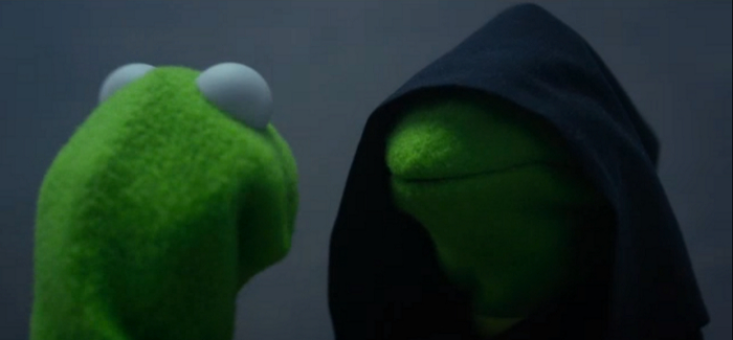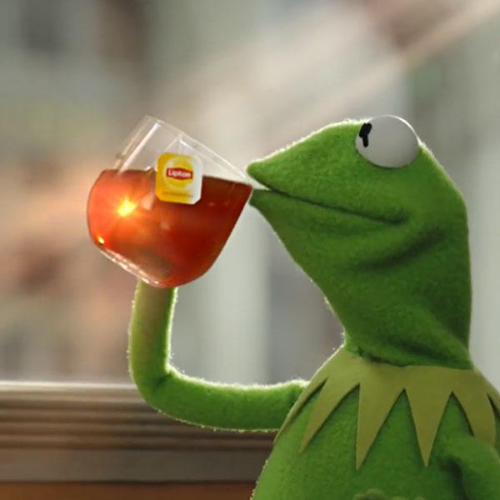
Memes are cultural ideas, jokes, or expressions that spread through imitation and evolve as they are shared. Unlike genetic traits, memes change meaning depending on how people reinterpret them. For a meme to survive, it must be easy to remember, easy to share, fit into existing beliefs, and sustain interest. The rise of digital platforms has amplified their reach, turning memes into complex belief systems, or “memeplexes”, that reinforce one another in online culture (Atran, 2001).
Kermit became a powerful meme symbol through Evil Kermit, which features a still from Muppets Most Wanted (2014), where Kermit confronts his hooded doppelgänger, Constantine. The meme gained traction in 2016 and was described by The Guardian (2016) as “shorthand for the internal conflict between what one wants to do and what one should do.” It resonated with millennial humor for its ironic depiction of self-indulgence and inner struggle. Its consistent image format (Kermit vs. Evil Kermit) and introspective tone gave it symbolic power while limiting flexibility (Palmer, 2017).

In contrast, the “But That’s None of My Business” meme, which went viral in 2014, features Kermit sipping tea or milk while sarcastically commenting on social hypocrisy. The Instagram page @thatsnoneofmybusinesstho, which no longer exists, gained over 130,000 followers in just four days (Palmer, 2017). Its flexible imagery and passive, observational tone made it highly adaptable and widely remixed. This meme allows critique without confrontation, letting users distance themselves from the content they share (Ngo, 2022). Users frequently paired the image with text that called out double standards, often pointing to people criticizing others for things they do themselves, followed by the ironic tagline “but that’s none of my business.” This format let users highlight everyday contradictions while pretending to stay neutral. The contrast between Kermit’s calm appearance and the critical text made the sarcasm clear, turning the meme into a passive yet pointed way to mock social hypocrisy (Ngo, 2022).
